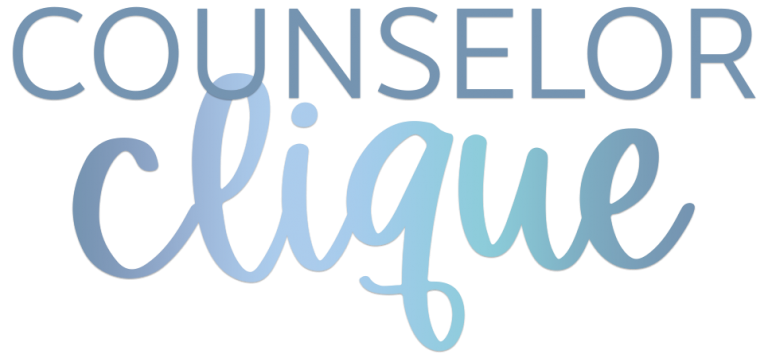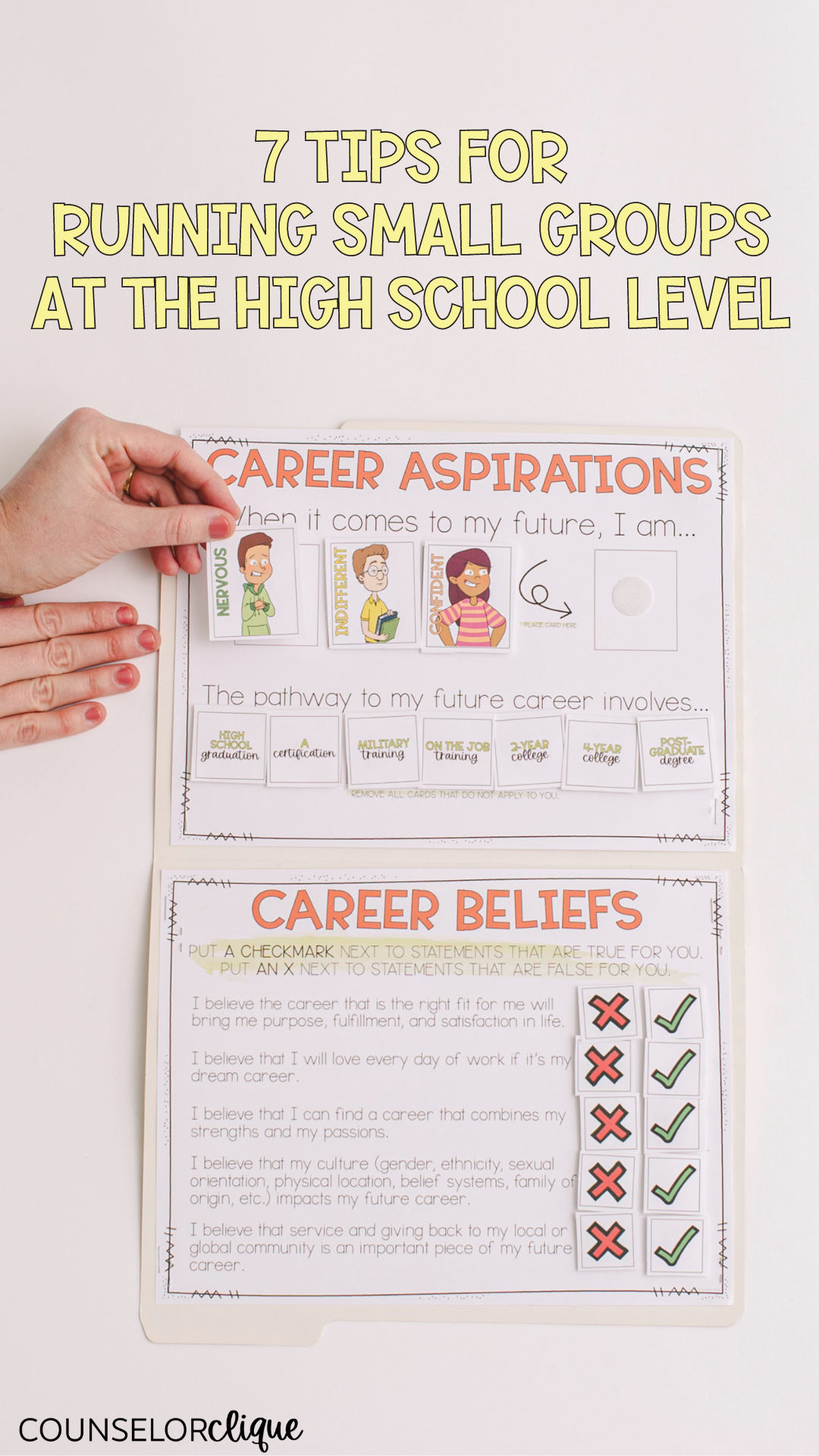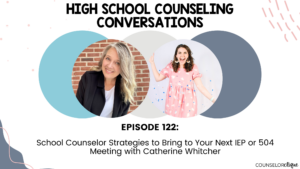It can be really easy to ignore running small groups at the high school level altogether… you have to find out how to make it work for you and your school. Once you find some small successes, you may find that it’s your NEW FAVORITE part of your school counseling program! Small group counseling at the high school level can be such a treasure!

1- Do a needs assessment, so you make sure you are actually serving your students with what they truly need.
Your needs assessment doesn’t have to be crazy complicated. It can be on paper or on the computer. (Google Forms are LIFE.) Be curious. Ask questions that you want to know the answers to. Explain what a small group is, and see who may initially be interested in it.
2- Try running small groups you are passionate about.
Students will be able to tell if you, as the school counselor, want to be there or not. You have to believe in the group and buy-in first before you expect a high school student to do the same. Is there a specific population in your school that could use some more love? Is there a group of students you gravitate to naturally? Is there a group that would put you outside your comfort zone but would be good for you professionally? Now is the time to GO FOR IT! (My favorite group to run each year is my First Generation College-Going Small Group!)
3- Spend some time getting your activities together for running your small groups for each week.
Either buy some small group materials online or come up with your own lesson plans and activities that work for you and your students. (Teachers Pay Teachers is a great place to start! I have a Leadership Small Group, a Stress Management Small Group, and a winter-themed Stress Management Small Group. If you’re looking to just go ahead and snag a school year’s worth of high school small group curriculum.)
Your activities for running your small group do NOT have to be fancy or complicated. You probably will over-plan most weeks and have more activities to do with them than you have time for. Your planning will make students will feel valued during this time, and they will learn coping skills and psycho-educational skills that they’re not getting elsewhere. (While you’re here, download my Stress Management Coping Skills FREEBIE to see if a stress management small group would be a good fit for your school counseling program!)
4- Make time by putting it on the calendar.
I find that if I don’t go ahead and put it on my calendar, it WILL NOT get done. Even if I don’t have my full game plan fleshed out just yet, I have to go ahead and assign a date for it to happen. A high school counselor is always juggling something new to the top of the “what’s-most-important” list, and something that requires some prep like a small group may never make it if we’re not intentional about it.
5- Find a time that works best for your school’s schedule.
We run on a block schedule with only 4 long classes a day for an entire semester. I like to pull students from the tail end of one class and the first half of the next class. I make sure students are passing their classes (or at least trying) and make everyone involved understand that students are responsible for what they missed in class.
We found out what DIDN’T work through trial and error. Different ideas also work for different groups of kids. Some don’t mind meeting during lunch, and some don’t mind coming before school starts in the morning. My First Generation Small Group has always met before the school day has started; these students have an incredible work ethic, and this time seems to work best for them.
6- Get teacher buy-in.
Show your teachers how their students WILL BE or ARE better because of what you’re doing. Collect data and show them the positive changes your students make. You can use my School Counseling Small Group Data Spreadsheet with any small group you’re running, but I also include this spreadsheet in each of my small groups on TpT. Summarize your data and present it to stakeholders. When they see that their students’ attendance, behavior, and/or grades are better because of your small groups, they’ll be BEGGING you to do more! (Administrators also speak this DATA-LANGUAGE!)
The first group I ever ran in my high school was a grief small group. Teachers saw these students struggling and knew they could not help them within the scope of their role in the classroom. It was hard for a teacher to argue that a student didn’t need help when the student was struggling with grief.
7- Have fun with it!
Use this time to get to know a smaller group of students in a more intimate setting. They may open up in ways you didn’t expect compared to an individual counseling session. Students will learn from each other, and you will be so proud as you watch that happen!
After 6-8 weeks with students in a small group, you will always have that connection with them, and they will always look to you as a safe resource.
If the group doesn’t go as planned, if the students don’t grow like you hoped they would, if the attendance is inconsistent… don’t be discouraged. Get a new group, and try it again. You’ll continue to figure out what works best at your school, and you’ll continue to build your confidence around running small groups at the high school level!
Need some ideas for getting started? Check out these “3 Tips for Getting Your High School Counseling Groups Started on the Right Foot!“







